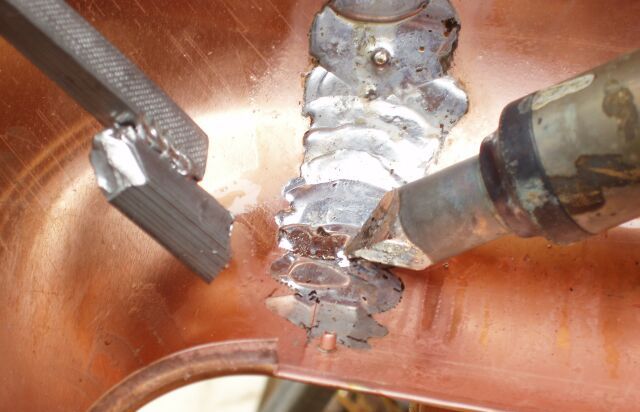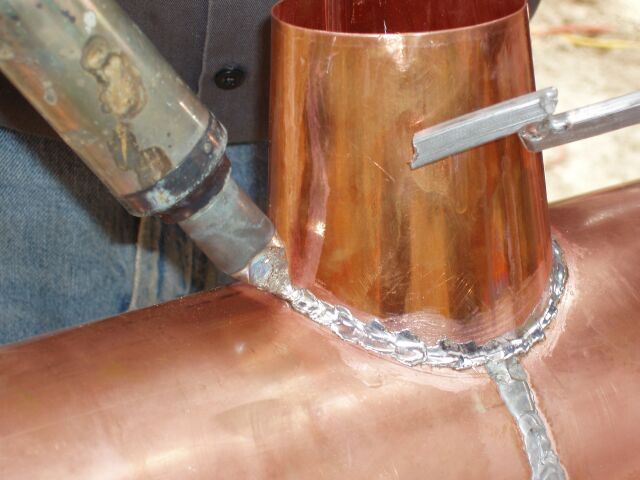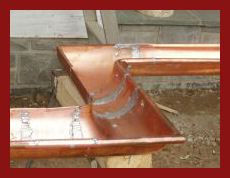Your #1 Soldering Iron for Copper Gutters
American Beauty 300 & 550 Watt Heavy-Duty Soldering Irons
Leave the propane fumes in the past.
When Charlie, President of Chuck-Ways Contracting Company, phoned us late one Thursday afternoon, he had what he felt was an unusual question. His company, specializing in supplying and installing high-end custom copper gutter-work, had been using a set of large 300 watt industrial soldering irons which had lost all identifying marks years ago. The irons worked so well that he was determined to replace them with the identical product. So Charlie's unusual question was "Am I using your tool?" He was so determined to purchase the same high quality iron th
These series of photos provide excellent examples of Charlie's excellent work. When working on large jobs such as the one pictured here, it is virtually impossible to pre-solder all the joints on the ground. A 3 pound soldering iron and heavy-duty extension cord makes for a much easier mode of soldering than hauling a propane tank up onto a three story roof. Charlie's uses a three man team to assist in placement and manipulation of long gutter pieces, keeping in mind that movement during soldering could result in cold solder joints. Watching the team in action, the term "workman-like" seems most appropriate. In Charlie's eyes, his customer´s are investing good money into their home and he wants to provide optimal value for every dollar. That is the same philosophy that we go by here at American Beauty Tools.
From a technical standpoint, sheet-metal solder joints serve two purposes, establishing a mechanical connections as well as a hermetic seal. It is absolutely essential that these joints are done properly the first time, for repairs to leaky copper gutters after the fact will prove 100 times more difficult than simply doing the job correctly the first time. When deciding on the most appropriate soldering iron to use, it is important to match the iron and tip size to the soldering application by first determining the amount of overlap and the thickness of the materials that are being soldered. The tip to use should be as wide of wider than the overlapping seams in order to achieve adequate thermal transfer to the work during soldering. For soldering thicker materials together a larger or higher wattage iron may be required in order to maintain adequate thermal recovery during operation.


